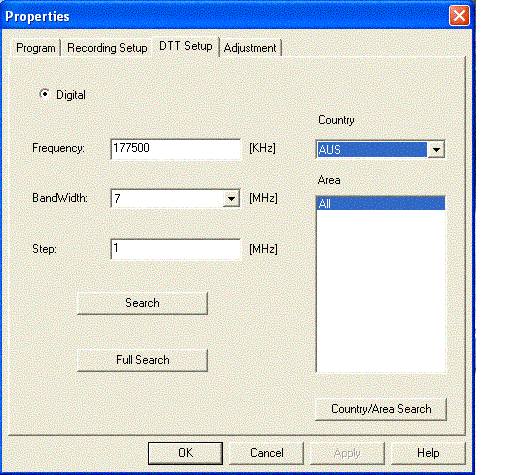DigiVision HTPC HTPC
These instructions
are designed to assist customers set up the system quickly and with
ease. Please also read the manual included in the CD you got with
your package. It is assumed that the reader has some experience with
installing PCI cards into a PCI slot on a PC motherboard. If this
is not the case, please seek assistance. Installing the VP-DTV-T model
is no different than installing any other PCI board (sound card, modem,
network card, etc).
- Uninstall any TV Tuner, video capture or other device that uses
the BT8x8 family of chipsets.
- Choose a PCI slot on the motherboard in the middle (not the
one close to the AGP port, and not the one at the other end of
the MB)
- Connect the Antenna cable only after the card is fully installed
and secured in the PC. If uninstalling the card, disconnect the
cable first.
- You must have a sound card in your PC or built in audio on on
your motherboard or your TV card may not install properly.
- For best performance ensure you have a good quality antenna.
- Windows XP is the preferred operating system.
- You are advised to use only the drivers provided by us, either
in the CD provided with the card or available for download form
our web sites, from time to time.
.
Use the CD provided, (or the latest version of the software you have
downloaded) insert it into a CD drive. If the autorun does not start
by itself, using
explore, find the autorun.exe file (or the setup.exe file in the
VisionDTV folder) and double
click on it. Follow the instructions, until the setup process is finished. Launch
the application software (an icon has been placed on your desktop
during the setup process). The following panel should appear, below
the video window.

Either click on the “spanner” icon on the control panel or
right click your mouse in the video window and select Properties.

On the Properties Panel, Select AUS for
Australia, click on Country/Areas Search and you should get all
channels.
If for some reason you are missing a channel you can try and
scan it manually. You may find the frequencies of all services available in your area
here.
If that fails,
you may not have a strong enough signal. Check you aerial and try
again.
This is not generally necessary, but if required, your card allows
you to add a channel to the list manually. To do this select the
Program Tab, under properties. Click on "Add One Channel" enter the
relevant parameters (frequency, Bandwidth (=7 for Australia), enter
the VPID, APID, give the channel a name and click OK). The channel
will be added to the list in the Program Panel, double click on the
program and it will lock the frequency and play it.
Note- You should save the scanned channels as a
file of your choice, for later loading without having to re-scan. You
should now be able to double-click on the channel appearing in the
List window and within a few seconds, video and audio should be
playing.
I
installed the card OK, but I am not getting all the channels.
Check your aerial. Is it connected properly? Do you get a good (80%+ )
signal quality and strength? If not, you have a reception problem. Try
a different aerial antenna or even an amplifiers/booster.
Before you commit to spending large amounts on upgrading your
antenna/cabling, etc we suggest you get expert advice from a local
antenna specialist.
If your signal quality and strength is clearly good (say above 90%)
and you are not receiving a particular channel when auto scanning, try
scanning that particular frequency manually. Frequencies for you
particular location maybe be found
here.
Make sure that there is broadcast in your area, by the TV
station/provider, in the first instance.
I installed the card OK, got all the channels,
but I get stuttery or no video/audio.
Assuming that the signal strength and quality are good, as described
in the previous paragraph.
Make sure that the cyberlink codecs are properly registered. Go to
Program Files/PC-TV/Common/Bin folder open up a DOS shell and type
regsvr32 claud.ax and regsvr32 clvsd-dtv.ax
If that did not fix it, there is probably a problem with either your
· Hardware - Change the PCI slot, make sure you have no
hardware conflicts, note that certain wireless network devices could
be interfering, also note that some people have reported issues with
certain SATA controllers.
· Software - make sure you have the appropriate O/S and the
latest drivers for your audio card or video card. If necessary
re-install Windows (XP recommended) and try again.
I tried everything to get the card to work, but unsuccessfully, what
do I do?
If you have followed the above steps and you are still having problems
we suggest that you try the DVB-t card in a different PC and location,
if problem persists return the card for testing and replacement if
found faulty.
For Customer Support email
support@digitalnow.com.au
|


